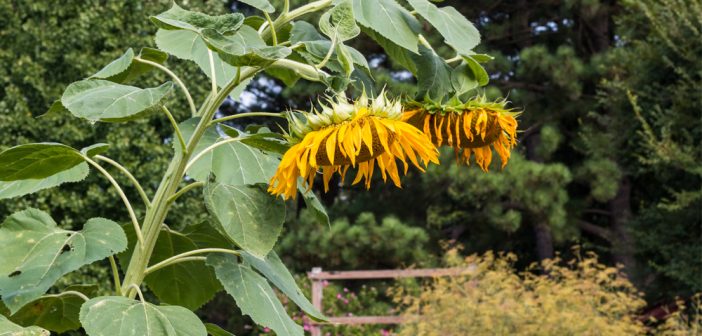If you want to have healthy plants, it is important to know how to care for them during the sizzling summer heat. Use these tips to keep your flowers and plants thriving all summer long.
Tip 1: Understand When to Water Your Plants
Don’t water your plants during the hottest part of the day. The soil surrounding the plants will become hotter as the day progresses. If you water the plants during that time, the roots will become damaged from the boiling water. Water your plants early in the morning when the soil is cooler in order to protect your plants.
Tip 2: Provide Shade for Your Plants
Keep houseplants away from sunny or hot windows during a heat wave and provide shade for your outdoor plants. You can create shade by setting up a tent over a vegetable garden or by hanging a sheet on a clothesline next to a flower garden. If the sunlight and heat is extremely intense, poke holes in a paper bag and place over a plant for a few days.
Tip 3: Don’t Fertilize Your Gardens or Lawns During Hot Weather
Avoid adding fertilizer or other additives to the soil when it is hot outside. Natural or artificial additives will change the soil, making it more difficult for plants to survive a prolonged heat wave. Make sure to fertilize the soil after the heat wave ends.
Tip 4: Use a Drip Irrigation System for your Plants
If you can’t water your plants early in the morning, invest in a drip irrigation system that you either purchase or make. You can use old plastic bottles in order to create an irrigation system for your vegetables or houseplants.
Tip 5: Get Rid Of the Weeds in a Garden Quickly
Even though your plants might look wilted during a heat wave, weeds may continue to thrive, taking all of the moisture from the soil. Make sure to pull weeds quickly from a garden and apply weed killer early in the season to prevent as many weeds as possible.
Tip 6: Don’t Transplant When the Temperatures are Hot
When plants are moved, it shocks the roots or stems. Wait a few days for the weather to cool down before transplanting any flower or vegetable plants. Always make sure that a plant is healthy before you transplant it.
Tip 7: Use Mulch to Protect the Roots of Plants in a Garden
Protect the roots and base of plants with mulch (straw or wood chips.) Begin to add mulch early in the season rather than waiting until it is hot outside. Pile the mulch around the base of the plants so that the roots are protected from the intense heat of the sun.
Tip 8: Keep Your Outdoor Plants in Containers
If you live in a region with hot summer weather, keep your outdoor plants in containers that you can easily move to a different location. When there is a heat wave, place the containers under a porch overhang or underneath a tree. This will help keep the soil in a container moist so the plant won’t wilt and die during hot weather.
Tip 9: Control the Insects in Your Garden
Insects will proliferate in a heat wave. Apply pesticides to control the beetles, flies or grasshoppers so your plants won’t die from the infestations. Prepare your garden’s soil in the spring in order to prevent insect infestations when the temperatures begin to soar.
Tip 10: Avoid Pruning Plants During a Heat Wave
When you prune a plant, it shocks its root system. It is not a good idea to trim leaves or branches during a heat wave. Make sure to prune plants before the weather gets too hot or wait until later in the summer to perform this gardening chore.
Tip 11: Drench the Plants with Water When the Temperature Drops
If you have a day in the summer where the temperature drops, take advantage of it by watering your plants several times thoroughly.
Tip 12: Choose Plants that can Withstand Hot Temperatures
When you live in a hot region, don’t choose plants that can only survive in cooler temperatures. Find out what type of plants gardeners recommend for hot climates. Plants like cacti or succulents are great because they require less water.
Tip 13: Increase the Humidity Inside a Home
If you live in a dry hot climate, your indoor houseplants will suffer from the lack of humidity. However, you can increase the humidity in a home by using a humidifier each day to moister air.








